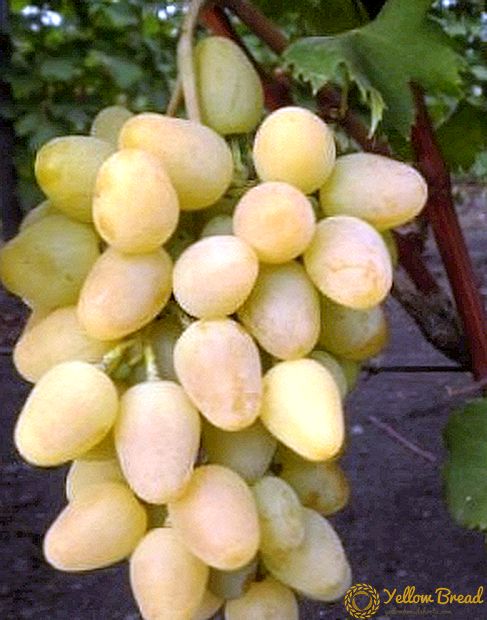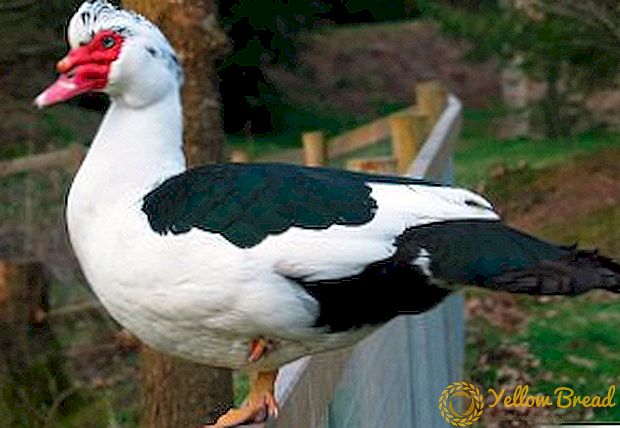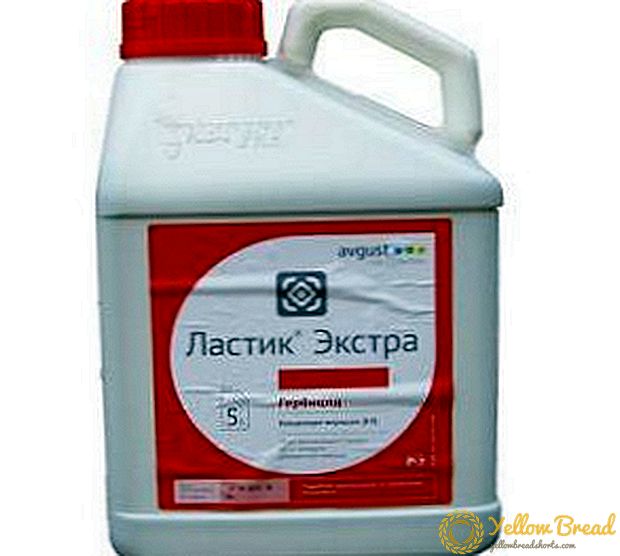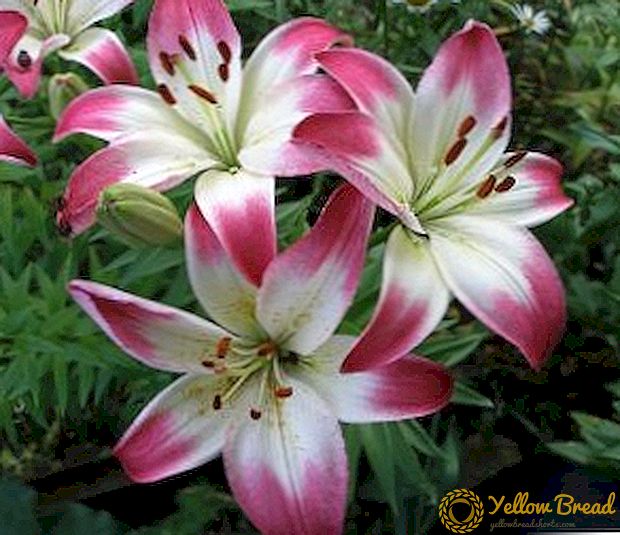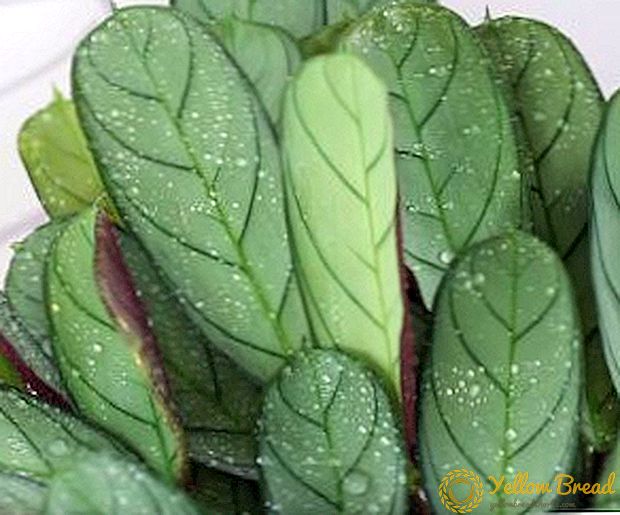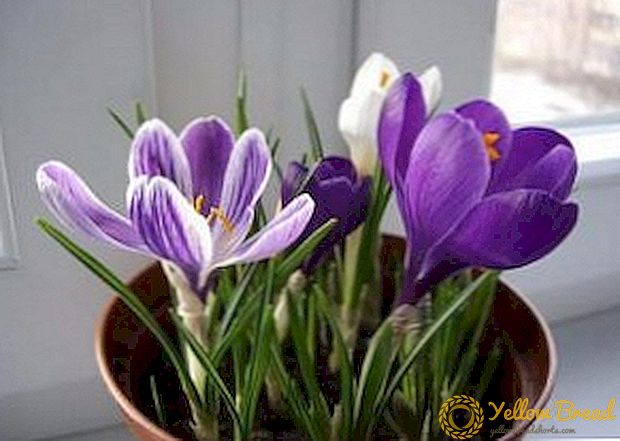 In winter, delicate primroses can create a festive atmosphere in the room. Using special methods, you can achieve their flowering at a specific time, for example, on the New Year. Crocuses are just such plants, but planting and caring for them at home require some knowledge and effort.
In winter, delicate primroses can create a festive atmosphere in the room. Using special methods, you can achieve their flowering at a specific time, for example, on the New Year. Crocuses are just such plants, but planting and caring for them at home require some knowledge and effort.
- Crocus or saffron - flower description
- Choosing a crocus pot
- Selection of soil for saffron
- What crocus bulbs to choose
- Crocus planting and propagation
- Growing crocuses in a pot
- Watering crocuses
- Fertilizer and dressing
- Long flowering care
- Possible problems with growing
- Crocus Pests and Diseases
Crocus or saffron - flower description
Crocus or Saffron - low perennial bulbous plant. The crocus buds are shaped like small tulips. The color of flowers is varied: white, lilac, purple, yellow. Hybrid varieties can have petals of two colors. When a flower bud opens, three yellow or orange stamens can be seen inside. The leaves are very narrow, dark green with a white vein in the center. And on the flowerbed in the garden, and as a homemade flower, crocuses look very beautiful,you only need to choose the right grade.
Choosing a crocus pot
 To plant crocuses at home, you need to choose the most suitable pot for plants. The bulbs should not come into contact with the walls of the pot and with each other, so its size depends on the planned number of plants (usually from five to ten). The best option is a wide pot in the shape of a bowl with low walls. Especially for the forcing of crocuses there are round containers with holes for sprouts.
To plant crocuses at home, you need to choose the most suitable pot for plants. The bulbs should not come into contact with the walls of the pot and with each other, so its size depends on the planned number of plants (usually from five to ten). The best option is a wide pot in the shape of a bowl with low walls. Especially for the forcing of crocuses there are round containers with holes for sprouts.
Selection of soil for saffron
The soil for crocuses must be neutral, light and well drained, because the stagnation of moisture leads to the rotting of the bulbs. The ideal option would be the store floral substrate. You can also prepare an earthen mixture of coarse sand, turf and sheet mixture in equal parts.
What crocus bulbs to choose
 For good growth and development of crocus, not only proper cultivation and care, but also high-quality planting material are important. You should choose the bulbs without spots, rot and mechanical damage.If certain defects are still visible, they must be removed and the site damaged by ash or loose coal must be disinfected. You also need to clean the bulbs of scales and roots.
For good growth and development of crocus, not only proper cultivation and care, but also high-quality planting material are important. You should choose the bulbs without spots, rot and mechanical damage.If certain defects are still visible, they must be removed and the site damaged by ash or loose coal must be disinfected. You also need to clean the bulbs of scales and roots.
Buying bulbs in the store, you should pay attention to the number of their size. Often, the material is sorted according to the circumference in centimeters according to the international standard for measuring bulb plants. For crocus bulbs with a circumference of 5 to 10 cm, the following numbering of bulb sizes (with diameter) is typical:
- 5 / 7- 1.6-2.2 cm;
- 7 / 8-2.2-2.5 cm;
- 8 / 9-2.5-2.8 cm;
- 9 / 10- 2.8 cm-3.2 cm;
When growing crocuses in a pot, a single flower can be expected from a plant with a size of 7/8, with a size of 8/9 - 2-3 flowers, with a size of 9/10 - 3-4 flowers.
Large Dutch hybrids labeled 10 / + give 5-6 flowers. They are most suitable for home cultivation: they lend themselves to distillation and bloom in large flowers.
Crocus planting and propagation
Bulbs are the most common material for planting, since crocuses by seeds are more difficult to propagate and this method is practically not used in floriculture. Such a plant will bloom only in 4-5 years.Each year, the old corm dies, and in its place grow new onions.
 Before planting crocuses in the pot, purchased planting material must be cooled.. Store bulbs are usually already dried, they need only be kept at room temperature for several days and then placed in a refrigerator.
Before planting crocuses in the pot, purchased planting material must be cooled.. Store bulbs are usually already dried, they need only be kept at room temperature for several days and then placed in a refrigerator.
If the bulbs are taken from the plot, the preparation process will be longer. After digging in June, the bulbs are dried and sorted. At first, they should be stored at a high temperature, gradually reducing it (from 34 to 20 degrees). After 2 weeks, lowering the temperature, set the mode at 17 degrees. In such conditions, the material is stored until the second half of August, after which the cooling process begins. In a dry and dark room at a temperature of 4-9 degrees or in a refrigerator, bulbs are stored in thick paper for about a month.
Planting produce 70-90 days before the planned flowering date. At the bottom of the pot should be laid drainage layer. The bulbs are placed in the prepared soil completely or leaving a small "tail". Pot with seedlings clean for 2 months in a dark cool (5-8 degrees) place for germination.
Growing crocuses in a pot
Crocuses at home are grown by forcing.
When the sprouts are strong enough and have reached a height of 3-5 cm, the pot should be brought to light and provide a temperature of 10-15 degrees. In favorable conditions, saffron will bloom in two weeks.
 Providing crocuses some care after flowering at home, you can prolong their life. The second time after distillation, the plants usually do not bloom, and the bulbs are thrown away, but if they are planted in open ground, “kids” are formed on them. Ideally preserved onion is needed for re-growing crocus. To do this, you need to feed the soil with top dressing and regularly water the plant until the leaves turn yellow and fall off.Then the bulb must be removed, cleaned from the ground and stored in a dark, dry place for further planting in the fall.
Providing crocuses some care after flowering at home, you can prolong their life. The second time after distillation, the plants usually do not bloom, and the bulbs are thrown away, but if they are planted in open ground, “kids” are formed on them. Ideally preserved onion is needed for re-growing crocus. To do this, you need to feed the soil with top dressing and regularly water the plant until the leaves turn yellow and fall off.Then the bulb must be removed, cleaned from the ground and stored in a dark, dry place for further planting in the fall.Watering crocuses
Crocus does not like excessive moisture and is resistant to drought, so you need to water the plant moderately, 2-3 times a week when the topsoil dries out. During flowering, the plant should be watered through the pan, removing excess liquid half an hour after watering.
Fertilizer and dressing
During planting the plant does not need to fertilize. Potash and phosphate fertilizers are most useful for the development and flowering of crocuses. Fertilizing is done with the emergence of shoots (in a ratio of 2: 1), with the formation of buds and after flowering (in equal parts). The use of nitrogen fertilizers is not recommended.
Long flowering care
To find out why crocuses stopped blooming, you need to analyze the conditions of their maintenance. Do not forget that saffron is a spring primrose, and it may not like the temperature (20 degrees or more) or the room's light is too bright. To prolong the flowering of homemade crocus, you need to hide it from direct sunlight or bright lamp light and maintain a cool temperature (14–16 degrees, at night - even below 0). In the right conditions, some varieties are decorative for up to three weeks.
Possible problems with growing
 In spring-flowering and autumn-flowering crocuses, development cycles and, accordingly, planting time do not coincide: spring should be planted in September, and autumn in summer. When buying planting material, be sure to pay attention to the time of crocus blooming. Spring crocuses are commonly used for forcing.
In spring-flowering and autumn-flowering crocuses, development cycles and, accordingly, planting time do not coincide: spring should be planted in September, and autumn in summer. When buying planting material, be sure to pay attention to the time of crocus blooming. Spring crocuses are commonly used for forcing.
If you plant bulbs of different varieties and sizes in one container, they will bloom in different flowers at different times, which looks less aesthetic.
Natural crocus varieties in a flowerpot are not very decorative; even with careful care, the flowers will be small. It is better to plant them in the garden, and for pot culture it is recommended to choose large-flowered varieties.
Yellowing leaves is a sign of chlorosis. This disease is a consequence of bulb damage or adverse conditions (poor drainage, malnutrition).You can try to reduce the amount of watering.
Crocus Pests and Diseases
If the plant has bright spots on the buds, and the petals are deformed and do not open - perhaps the crocus is infected with a viral infection. In this case, the plant must be destroyed, and the soil treated with manganese solution.
The corms of a flower can be affected by a fungus: they become softened, and spotted formations appear under the scales. For the prevention of fungal diseases, the material for planting must be dried and treated with special means.
Growing crocuses in the house is not the easiest, but fascinating. If you follow a few rules, these fragile flowers will give you only joy and spring mood.

